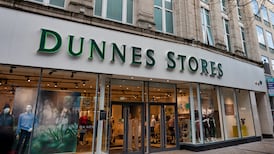ANALYSIS:WHEN SMURFIT Kappa indicated earlier this year that 2008 would be much tougher than last year, the market took a dim view, particularly as peer companies were more upbeat.
"It was interpreted that we were having a tough time," said Gary McGann.
The strong performance in Smurfit Kappa's shares yesterday - up 8.65 per cent to €4.90 - suggests the market is now reacting positively to the company's decision, ahead of many of its competitors, to cut costs, reduce capacity and increase prices.
Smurfit Kappa has performed well in challenging market conditions, said NCB Stockbrokers. "It continues to seek to recover input costs and adopts a disciplined approach to capacity management," it said.
That disciplined approach has seen the company on target to achieve its target of €180 million of synergy savings by the end of 2008.
In addition, the group has initiated a three-year programme to cut costs, which is expected to deliver at least €60 million in 2008, with further savings of up to €100 million by 2010.
In March, the company closed 130,000 tonnes of less efficient containerboard capacity in Valladolid, Spain. It had previously announced that it would take up to 80,000 tonnes of market-related downtime this year, to address an increase in its recycled containerboard inventory levels.
But concerns still remain about over capacity in the market and the impact this may have on all companies in the sector.
"A lot of low-cost capacity will come on-stream over the next two years, which will continue to put pressure on containerboard prices and, more importantly, on less efficient producers," said Goodbody Stockbrokers.
Smurfit Kappa chief executive Gary McGann argues that the increase in capacity should not make as much impact on "integrated players" such as Smurfit Kappa that own converting and corrugated plants and which comprise more than 50 per cent of the market.
These companies supply their plants from their own paper resources leaving a market in the region of 10 million tonnes for the existing non-integrated players and the newly-introduced capacity.
"There will be a battle royal in the second half of the pitch and we are in the first half of the pitch," he said.
And the company is hoping to profit from that battle and the downturn as it seeks takeover targets.
"There are huge opportunities," said Mr McGann. "In many of these cycles we have put together the best of our asset base."







